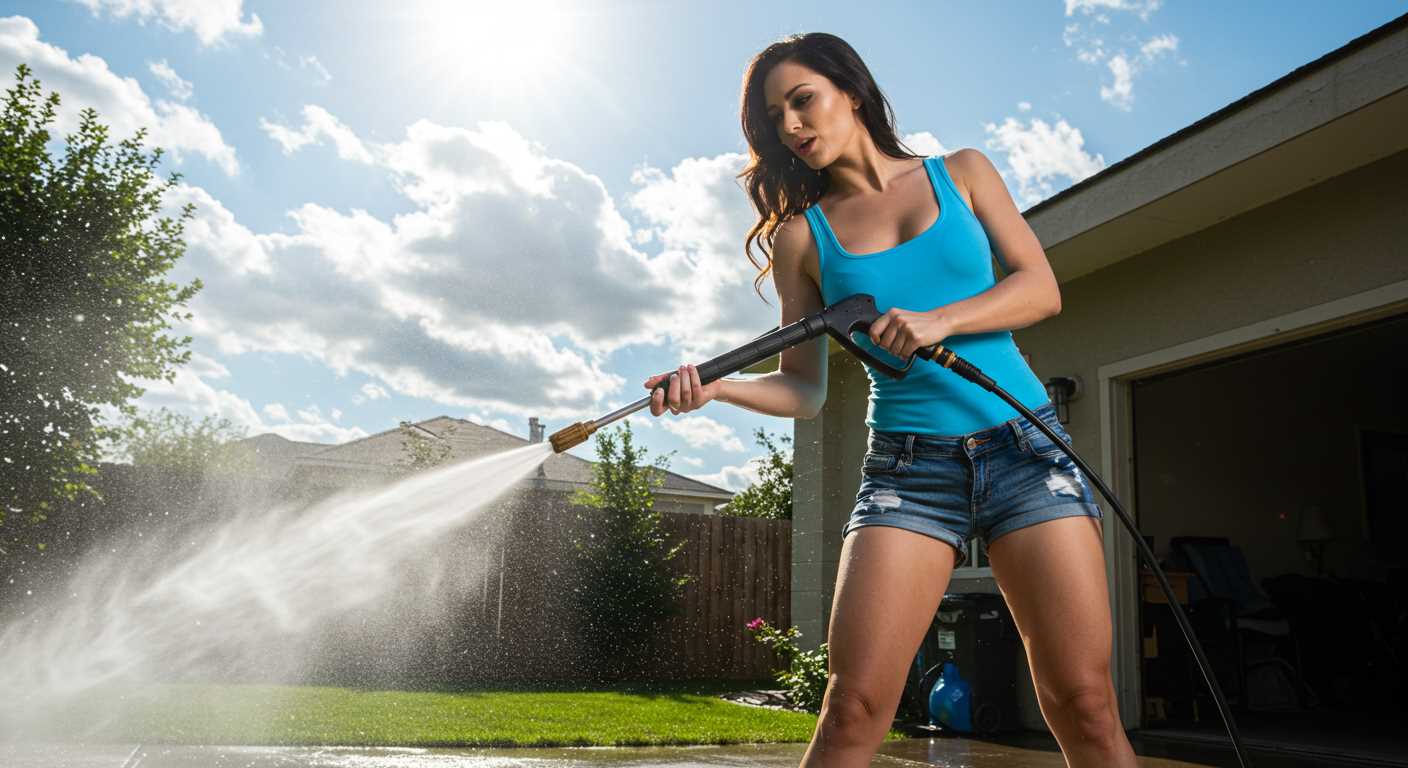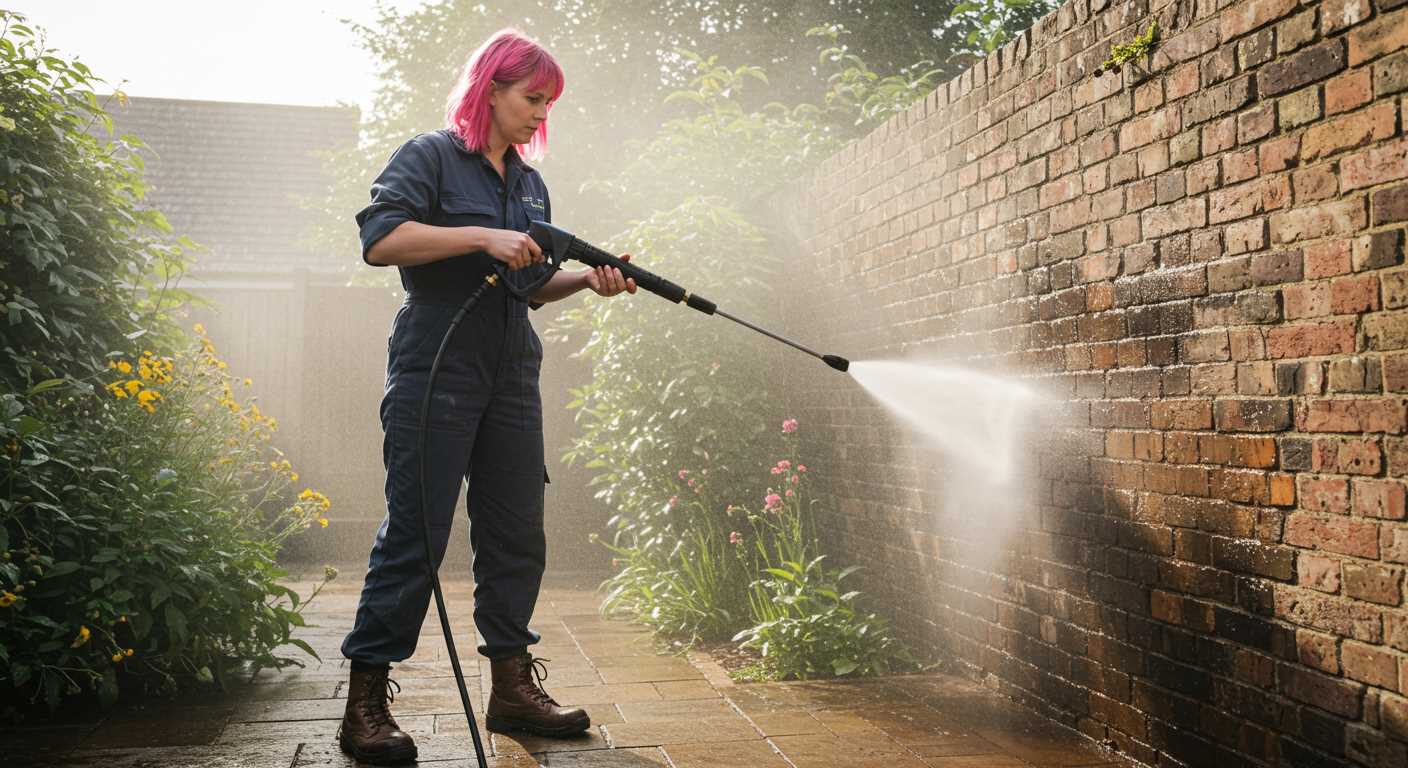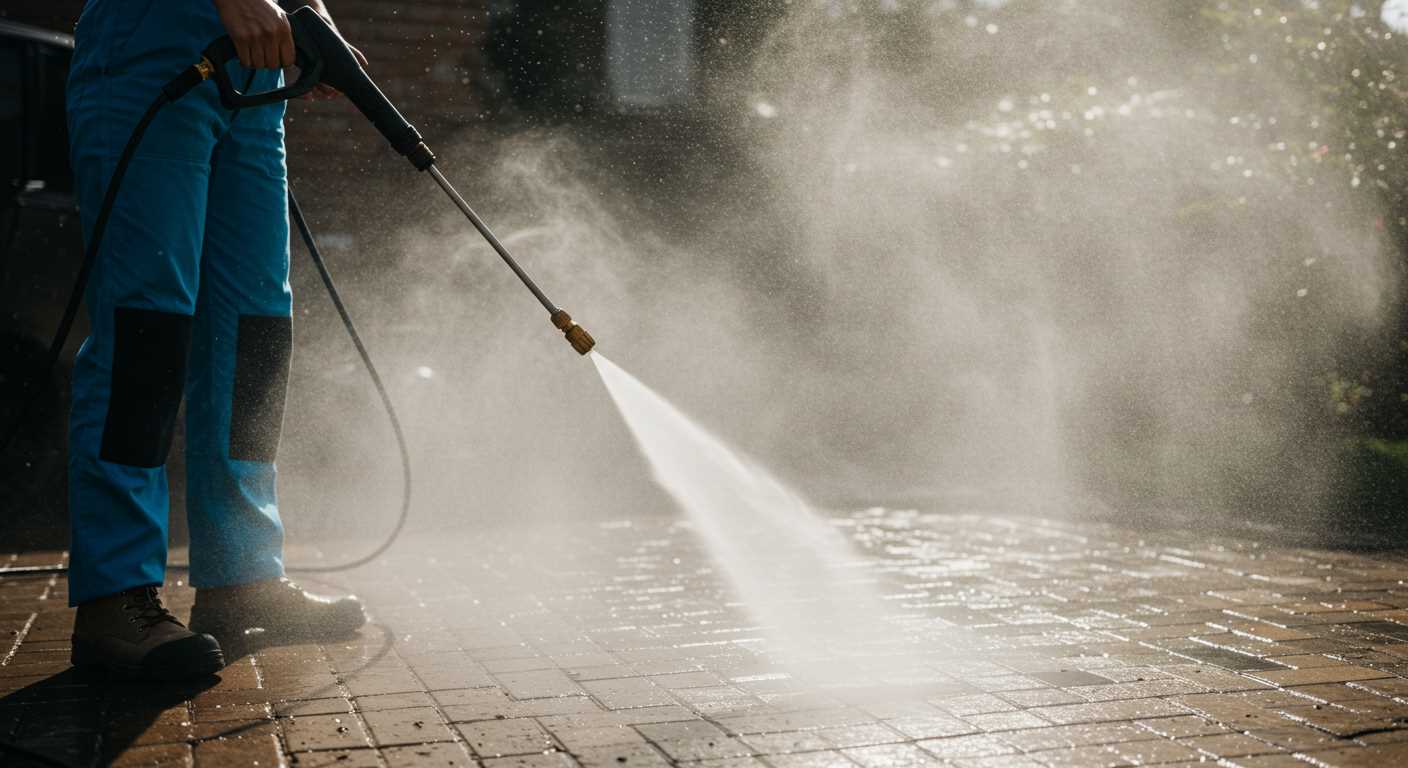



Check for blockages in the inlet or outlet hoses immediately. Dirt, debris, or kinks can significantly restrict water flow, leading to a drop in output. Ensure the intake filter is clean and free from obstructions.
Verify that the water source is adequate. The supply must meet the necessary flow rate to function optimally. Sometimes, a garden tap may not provide enough pressure, particularly if other hoses or fixtures are in use simultaneously.
Inspect the seals and O-rings in the unit. Worn or damaged components can result in leaks, causing a noticeable reduction in performance. Replacing these parts is often a straightforward solution but can make a significant difference.
Examine the nozzle for clogs or deterioration. If the nozzle is blocked or worn out, it will impair the cleaning action. Using the wrong nozzle type can also negatively impact the equipment’s ability to deliver the intended output.
Lastly, consult the owner’s manual for specific troubleshooting steps related to your model. Regular maintenance, such as descaling and proper storage, will prolong the life of the machine and enhance its functionality.
Identifying Common Causes of Low Pressure
Begin by examining the water supply. Ensure that the garden hose is connected securely, and the water source is fully turned on. Low flow from the tap results in inadequate water for the machine.
Check Hose and Accessories
If the hose contains kinks or blockages, this can restrict water flow. Inspect it thoroughly. Additionally, examine the nozzle for clogs. Clean or replace any blocked parts as needed to restore optimal operation.
Inspect Internal Components
Look closely at the inlet filter. Dirt accumulation can obstruct water flow. If the filter appears dirty, clean it with water, ensuring all debris is removed. In some cases, replacing it may be necessary to maintain performance.
| Potential Issue | Diagnostic Action | Solution |
|---|---|---|
| Water Supply | Check tap flow and hose connections | Ensure a free-flowing connection |
| Hose Condition | Inspect for kinks or blockages | Make repairs or replace if necessary |
| Nozzle Blockage | Examine and clean nozzle | Remove clogs or change nozzle |
| Inlet Filter | Check for dirt accumulation | Clean or replace filter |
Verify the pump operation. If the machine has been neglected, wear and tear on the internal pump components may occur. Listen for unusual noises that indicate potential mechanical failure. If necessary, consult a qualified technician for further diagnosis.
Checking and Replacing the Water Supply
First, ensure the water source is adequate and properly connected. Inspect hoses and fittings for kinks, leaks, or clogs. Any obstruction can limit flow and lead to unsatisfactory results. If the hose appears damaged, replacing it will often resolve the problem.
Inspect the Water Supply Connection

Examine the inlet valve on your equipment where the hose connects. If debris is present, clean or replace the valve. Additionally, verify that the water supply is turned on fully; any partial opening can drastically limit water flow.
Check the Water Filter
Many devices feature an integrated water filter. If it’s clogged with sediment, it may hinder the flow. Detach the filter and clean it thoroughly, or replace it if it shows signs of wear. Regularly maintaining this component can prevent future issues.
Examining the Pressure Washer Hose for Damage
Inspect the hose closely for kinks, twists, or abrasions. Any visible damage can impede flow and result in diminished output. Check for cracks or splits, as these can lead to leaks.
Steps to Inspect the Hose
- Disconnect the hose from the unit and the water source.
- Lay the hose flat and examine it along its entire length.
- Look for any wear or signs of deterioration such as bulges or discolouration.
- Run your fingers along the surface to feel for any rough areas that could indicate damage.
Testing for Leaks
If the hose appears intact, perform a simple leak test. Reconnect it to the water supply and turn on the water. Check for any dripping or spraying at connection points or along the hose. If you discover a leak, replacing that section or the entire hose may be necessary to restore full functionality.
Ensure the connectors are secure and not corroded. Tighten any loose fittings, as this can prevent the proper flow of water. Using a hose reel for storage not only prolongs the life of the hose but also helps avoid unnecessary damage.
Inspecting the Nozzle for Blockages
Start by removing the nozzle from the lance assembly. Look closely into the opening for any signs of debris. A clogged nozzle can significantly reduce water flow, leading to subpar performance. Use a small wire brush or a thin pin to clear any obstructions, taking care not to damage the nozzle itself.
After clearing, rinse the nozzle to remove residual dirt. It’s essential to test the nozzle by attaching it back to the lance and conducting a brief operational check. Observe the spray pattern; it should be uniform and powerful. If the spray appears weak or uneven, further cleaning may be required.
Consider soaking the nozzle in a solution of warm soapy water if there are stubborn deposits. Afterward, repeat the rinsing process. For nozzles with adjustable settings, ensure that they move freely and click into place without resistance.
If clearing and cleaning do not lead to improvement, assess whether the nozzle type is appropriate for your tasks. Swapping to a different nozzle designed for higher flow rates may enhance efficiency. Maintaining nozzles regularly is key; personal cleaning habits go a long way in ensuring optimal equipment functionality.
Assessing the Pump Functionality and Oil Levels
Check the pump for any signs of wear or damage. Look for leaks around the seals or casing, as these can lead to a significant loss of output. Run the unit and observe the sound; a grinding or rattling noise can indicate internal issues.
Inspect the oil levels if your model requires lubrication. Unscrew the oil reservoir cap and confirm that the oil reaches the recommended level. If low, refill it with the appropriate type, ensuring consistency with the manufacturer’s specifications. Oil changes may be necessary periodically to maintain optimal performance.
Ensure that there are no air locks in the pump. This can happen if the system runs dry or if there’s insufficient water supply. Purging air from the lines can help restore normal functionality. While doing this, pay attention to the water flow. Continuous smooth flow without interruptions is vital.
Test the pressure output directly after any adjustments. Fluctuations can be a symptom of deeper mechanical issues. If your checks do not yield improvements, consulting with a professional may be the best course of action, as continuing to operate a faulty pump can lead to further damage.
Understanding the Role of the Pressure Relief Valve

Inspect the pressure relief valve; it plays a significant role in regulating water flow and maintaining optimal functionality. If this valve is stuck open, it can lead to reduced output force. Make sure to check for any debris or defects that might impede its operation.
Test the valve by attempting to operate the unit while observing if the valve closes adequately. If it remains open, consider cleaning it or replacing it entirely. Regular maintenance of this component is crucial, as neglect can lead to chronic underperformance.
Monitor the valve’s spring mechanism as well. A weakened spring can fail to keep the valve shut under pressure, which results in a loss of performance. If you notice any signs of wear, replacing the spring could restore the system’s efficiency.
Remember, ensuring the pressure relief valve is functioning correctly is vital for achieving consistent output. If you follow these steps and find that the issue persists, it may be necessary to consult with a professional for further diagnosis or repairs.
Consulting the User Manual for Troubleshooting Tips
Refer to the user manual as your primary resource for diagnosing issues. It serves as a tailored guide to your specific model, containing troubleshooting steps and maintenance instructions.
Key Areas in the Manual to Focus On
- Troubleshooting Section: Look for a dedicated troubleshooting chapter. It often lists problems along with possible causes and solutions.
- Maintenance Guidelines: Find regular upkeep advice to ensure optimal functionality. Skipping routine maintenance can lead to decreased performance.
- Parts Diagram: Use the diagrams to identify components if replacement or repair is needed. Familiarity with each part can aid in locating issues quickly.
Additional Insights

Make sure to verify the recommended settings and parameters for operation. Small discrepancies in the setup can lead to performance issues. Also, consider checking the warranty information for coverage on repairs related to malfunctioning parts, as outlined in the warranty section of the manual.







